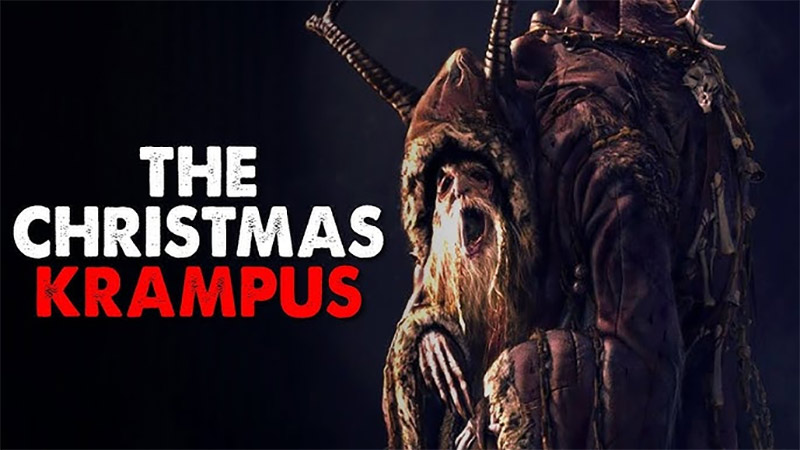Holiday
Krampus Christmas:The Dark Side Of Christmas December 5
When we think of Christmas, we often think of Santa Claus with his big sack of presents. However, in the Alpine countries, the holiday season has a terrifying opposite: Krampus Christmas. This tradition is associated with Krampus, a half-goat, half-demon creature whose job is to find and punish naughty children, creating a balance between rewards and punishments, the exact opposite of what Santa Claus is meant to be.
The Origin of Krampus
Krampus originates from ancient folklore in the Alpine regions of Austria, Germany, Slovenia, and Hungary. The name “Krampus” comes from the Old German word krampen, meaning “claw.” Many scholars believe the figure has pre-Christian origins, associated with rituals to ward off evil spirits and ensure a bountiful harvest. As Christianity spread, Krampus was incorporated into Christmas traditions as a symbol warning children against bad behavior.
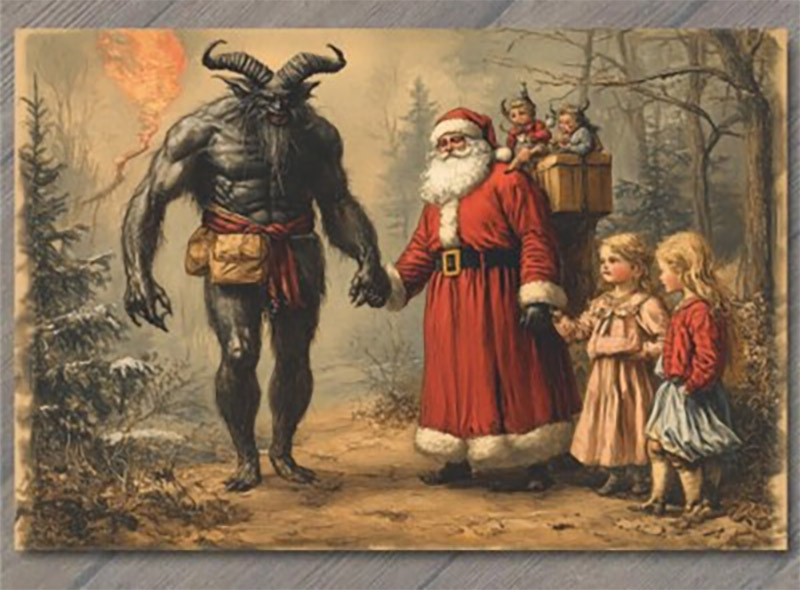
Krampus is described as a terrifying creature, the complete opposite of the benevolent appearance of Saint Nicholas. He is half goat, half demon, with curved horns, thick black fur, cloven hooves, a long tongue, and sharp fangs.
Contrasting Roles in Christmas Traditions
In folklore, Krampus often appears with Saint Nicholas. While Saint Nicholas gives gifts to good children on December 6, Krampus comes on the night of December 5 to punish naughty children with whips and iron chains. Krampus’ punishments don’t stop at threats or beating. He also carries a sack or basket on his back to kidnap the naughtiest children and take them to hell, or simply throw them into the river. This makes Krampus Christmas an effective tool for parents to teach their children all year round.
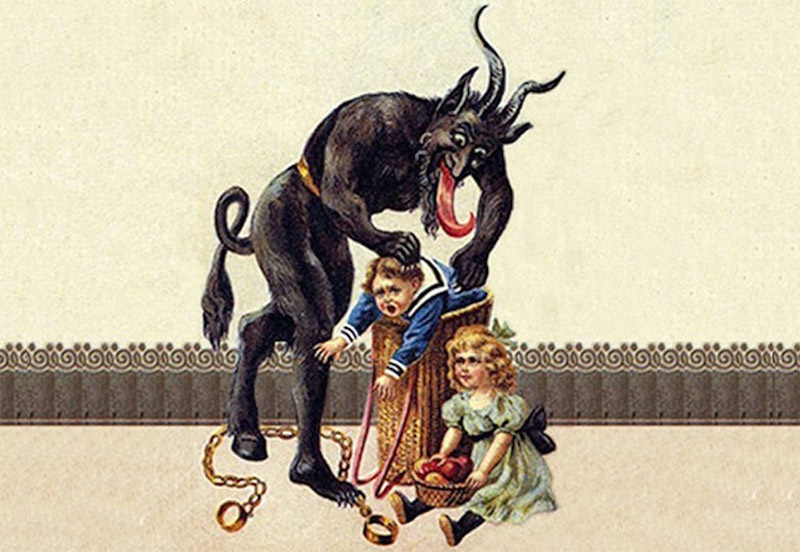
The combination of these two characters represents the concept of rewards and punishments always going hand in hand, helping children realize the importance of behaving properly.
Krampusnacht Festival and Krampuslauf Event
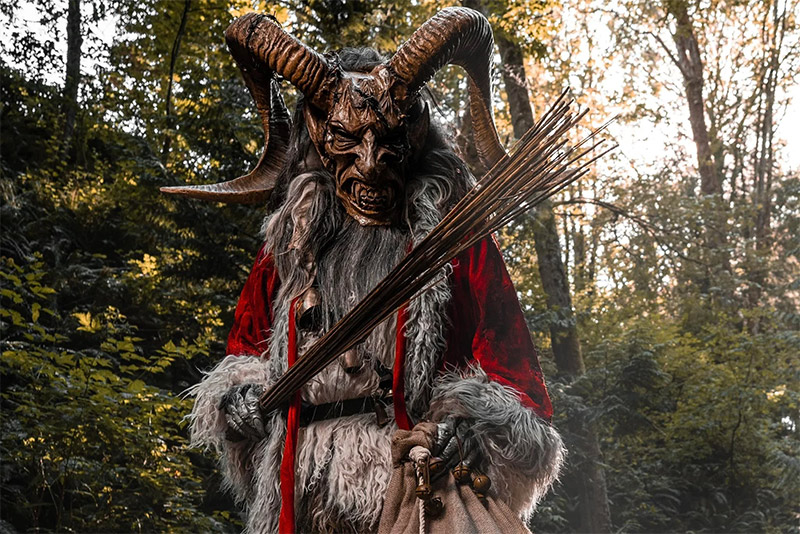
Today, the Krampus tradition is kept alive through Krampuslauf, lively parades in Austria, Germany and Switzerland. Hundreds of people dressed as Krampus, wearing masks, furs and jingling bells, parade through the streets amid laughter and fireworks. Although originally inspired by fear, Krampuslauf has now become a fun and artistic event that attracts tourists from all over the world. The Krampus character has also appeared in movies, comic books, and Christmas decorations, becoming a unique icon of popular culture.
The Influence of Popular Culture
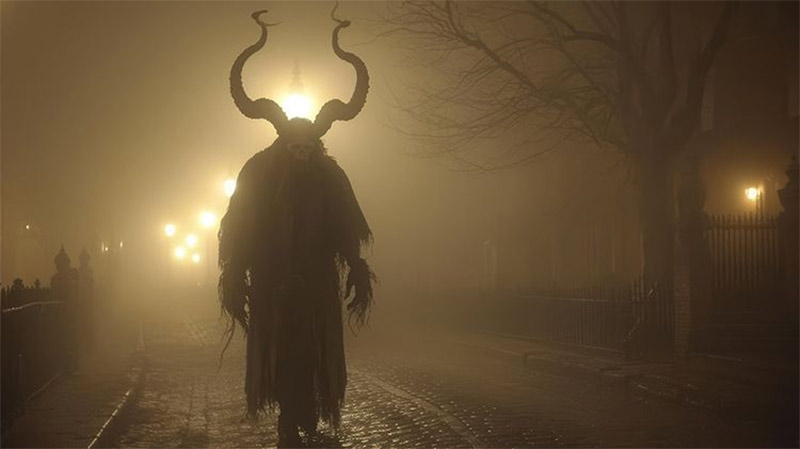
Despite attempts by education to eradicate him, Krampus Christmas has made a strong comeback in the 21st century. The appeal of a “Christmas Devil” has taken Krampus far beyond the borders of Europe. The Krampus figure has become popular worldwide, appearing in horror films, comic books, and other popular culture products. He brings a different, darker flavor of Christmas, troubling the curious minds of those who have grown tired of the usual sweet festive spirit.
Conclude
In modern society, Krampus is no longer a scary image but has become a symbol of balance during the festive season. The appearance of Krampus next to Santa Claus creates a perfect pair, reflecting the ancient belief in the balance between reward and punishment, between light and darkness. The contrast between Krampus and Saint Nicholas creates a complete picture of morality and deterrence. Although somewhat scary, Christmas Krampus still maintains a strong vitality, reminding people that the festive season is a time to reflect on one’s behavior, and punishment always goes hand in hand with reward.
Krampus Christmas Shirt Stand out this holiday season
With a strong European Christmas spirit, the Krampus Christmas Shirt is the perfect choice for those who love bold and different styles. The design stands out with the legendary Krampus image, half demon, half human, both mysterious and attractive, combined with strong red and black tones, creating a unique mark for the wearer. The soft, airy cotton material helps you feel comfortable on all festive occasions. Wearing this shirt, you not only express your own personality but also spread the fresh, bright Christmas spirit.





